OBJETIVOS:
• Repasar las pruebas diagnósticas Inmunológicas para el Diagnóstico y Seguimiento de Enfermedades Autoinmunes no-órgano-específicas.
• Conocer las presentaciones clínicas de las patologías de Autoinmunes sistémicas más frecuentes.
• Entender la correlación de las manifestaciones clínicas con las pruebas analíticas en estas enfermedades.
• Ser capaces de emitir un informe diagnóstico de calidad, preciso y entendible para los clínicos.
• Ser capaces de proponer el abordaje terapéutico de las patologías diagnosticadas.
Get Started for FREE
Sign up with Facebook Sign up with X
I don't have a Facebook or a X account

 Your new post is loading... Your new post is loading...
 Your new post is loading... Your new post is loading...
Hematologic Malignancies [6.2] Writer and Curator: Larry H. Bernstein, MD, FCAP Hematologic Malignancies Not excluding lymphomas [solid tumors] The following series of articles are discussions of...
Alfredo Corell's insight:
The following series of articles are discussions of current identifications, classification, and treatments of leukemias, myelodysplastic syndromes and myelomas.
A 5-year-old boy confined to a hospital room due to SCID (a rare immune disorder) is asking people to wear yellow in a show of support before his next operation — and the response on social media has been overwhelming, his family says.
Alfredo Corell's insight:
He asked supporters to wear his favorite color on March 27, before he undergoes a second bone marrow operation, and post the photos online with the hashtag #WearYellowForSeth. Seth’s family, from Northamptonshire, England, has been chronicling his time at the hospital on their blog, “Our Little Hero.”
Be part of the international movement and use the Rare Disease Day official international communication materials found here!
Alfredo Corell's insight:
Primary Immunodeficiencies are also among the Rare diseases. Thus, please... share the communication materials about the Rare Diseases Day :)
Mast cells are primary effectors in allergic reactions, and may have important roles in disease by secreting histamine and various inflammatory and immunomodulatory substances. Although they are classically activated by immunoglobulin (Ig)E antibodies, a unique property of mast cells is their antibody-independent responsiveness to a range of cationic substances, collectively called basic secretagogues, including inflammatory peptides and drugs associated with allergic-type reactions. The pathogenic roles of these substances have prompted a decades-long search for their receptor(s). Here we report that basic secretagogues activate mouse mast cells in vitro and in vivo through a single receptor, Mrgprb2, the orthologue of the human G-protein-coupled receptor MRGPRX2. Secretagogue-induced histamine release, inflammation and airway contraction are abolished in Mrgprb2-null mutant mice. Furthermore, we show that most classes of US Food and Drug Administration (FDA)-approved peptidergic drugs associated with allergic-type injection-site reactions also activate Mrgprb2 and MRGPRX2, and that injection-site inflammation is absent in mutant mice. Finally, we determine that Mrgprb2 and MRGPRX2 are targets of many small-molecule drugs associated with systemic pseudo-allergic, or anaphylactoid, reactions; we show that drug-induced symptoms of anaphylactoid responses are significantly reduced in knockout mice; and we identify a common chemical motif in several of these molecules that may help predict side effects of other compounds. These discoveries introduce a mouse model to study mast cell activation by basic secretagogues and identify MRGPRX2 as a potential therapeutic target to reduce a subset of drug-induced adverse effects.
Alfredo Corell's insight:
Because infectious diseases are a major source of morbidity and mortality in the majority of patients with primary immunodeficiencies (PIDs), the application of a prophylactic regimen is often necessary. However, because of the variety of PIDs and pathogens involved, and because evidence is scarce, practices are heterogeneous. To homogenize practices among centers, the French National Reference Center for PIDs aimed at elaborating recommendations for anti-infectious prophylaxis for the most common PIDs. We performed a literature review of infectious complications and prophylactic regimens associated with the most frequent PIDs. Then, a working group including different specialists systematically debated about chemoprophylaxis, immunotherapy, immunization, and recommendations for patients. Grading of prophylaxis was done using strength of recommendations (decreasing from A to D) and evidence level (decreasing from I to III). These might help infectious diseases specialists in the management of PIDs and improving the outcome of patients with PIDs.
The prevalence of thyroid autoimmunity in patients with #urticaria: a systematic review and meta-analysis. http://t.co/RLgLl7jRna
Alfredo Corell's insight:
ENDOCRINE, July 27th, 2014 The meta-analysis results showed that the prevalence of positive thyroid autoantibodies in patients with urticaria was higher than non-urticaria controls (TgAb: OR 6.55, 95 % CI 3.19–13.42, P < 0.00001, I 2 = 67 %; TmAb: OR 4.51, 95 % CI 2.78–7.33, P < 0.00001, I 2 = 47 %; TPOAb: OR 8.71, 95 % CI 6.89–11.01,P < 0.00001, I 2 = 20 %, respectively). The results of this meta-analysis suggested that patients with urticaria were more likely to have thyroid autoimmunity than the control groups.
Researchers have found a method to repair the gene mutation causing agammaglobulinemia, an immunodeficiency disease that almost exclusively affects boys and in which the body lacks the ability to produce immunoglobulins (gamma globulin). The disease is characterized by recurring bacterial infections, mainly in the respiratory system, and persons who suffer from the illness currently need life-long gamma globulin treatment.
Alfredo Corell's insight:
X-linked agammaglobulinemia (XLA) is an inherited immunodeficiency that results from mutations within the gene encoding Bruton’s tyrosine kinase (BTK). Many XLA-associated mutations affect splicing of BTK pre-mRNA and severely impair B cell development. Here, we assessed the potential of antisense, splice-correcting oligonucleotides (SCOs) targeting mutated BTK transcripts for treating XLA. Both the SCO structural design and chemical properties were optimized using 2′-O-methyl, locked nucleic acid, or phosphorodiamidate morpholino backbones. In order to have access to an animal model of XLA, we engineered a transgenic mouse that harbors a BAC with an authentic, mutated, splice-defective human BTK gene. BTK transgenic mice were bred onto a Btk knockout background to avoid interference of the orthologous mouse protein. Using this model, we determined that BTK-specific SCOs are able to correct aberrantly spliced BTK in B lymphocytes, including pro–B cells. Correction of BTK mRNA restored expression of functional protein, as shown both by enhanced lymphocyte survival and reestablished BTK activation upon B cell receptor stimulation. Furthermore, SCO treatment corrected splicing and restored BTK expression in primary cells from patients with XLA. Together, our data demonstrate that SCOs can restore BTK function and that BTK-targeting SCOs have potential as personalized medicine in patients with XLA. GO TO THE JOURNAL OF CLINICAL INVESTIGATION MANUSCRIPT:
Original Article from The New England Journal of Medicine — Transplantation Outcomes for Severe Combined Immunodeficiency, 2000–2009
Alfredo Corell's insight:
Sung-Yun Pai, M.D., Brent R. Logan, Ph.D., Linda M. Griffith, M.D., Ph.D., Rebecca H. Buckley, M.D., Roberta E. Parrott, B.S., Christopher C. Dvorak, M.D., Neena Kapoor, M.D., Imelda C. Hanson, M.D., Alexandra H. Filipovich, M.D., Soma Jyonouchi, M.D., Kathleen E. Sullivan, M.D., Ph.D., Trudy N. Small, M.D., Lauri Burroughs, M.D., Suzanne Skoda-Smith, M.D., Ann E. Haight, M.D., Audrey Grizzle, M.P.H., Michael A. Pulsipher, M.D., Ka Wah Chan, M.D., Ramsay L. Fuleihan, M.D., Elie Haddad, M.D., Ph.D., Brett Loechelt, M.D., Victor M. Aquino, M.D., Alfred Gillio, M.D., Jeffrey Davis, M.D., Alan Knutsen, M.D., Angela R. Smith, M.D., Theodore B. Moore, M.D., Marlis L. Schroeder, M.D., Frederick D. Goldman, M.D., James A. Connelly, M.D., Matthew H. Porteus, M.D., Ph.D., Qun Xiang, M.S., William T. Shearer, M.D., Ph.D., Thomas A. Fleisher, M.D., Donald B. Kohn, M.D., Jennifer M. Puck, M.D., Luigi D. Notarangelo, M.D., Morton J. Cowan, M.D., and Richard J. O'Reilly, M.D. N Engl J Med 2014; 371:434-446July 31, 2014DOI: 10.1056/NEJMoa1401177 CONCLUSIONS Transplants from donors other than matched siblings were associated with excellent survival among infants with SCID identified before the onset of infection. All available graft sources are expected to lead to excellent survival among asymptomatic infants. (Funded by the National Institute of Allergy and Infectious Diseases and others.)
I first came across the term “celiac disease autoimmunity” a few weeks ago as I read summaries of the article “Risk of Pediatric Celiac Disease According to HLA Haplotype and Country” that was published in the July 3, 2014 issue of the New England Journal of Medicine (NEJM).
Alfredo Corell's insight:
Liu E, Lee HS, Aronsson CA, et al. TEDDY Study Group. Risk of pediatric celiac disease according to HLA haplotype and country. N Engl J Med. 2014 Jul 3;371(1):42-9.
Highlights
Alfredo Corell's insight:
Abstract
Sjögren's syndrome (SS) is an autoimmune disease characterized primarily by lymphocytic infiltration of the exocrine glands, and autoantibody production. Multiple environmental factors affecting an individual with a genetic susceptibility may trigger the development of SS. Herein, we aimed to evaluate links between the different pebbles in the mosaic of SS. Demographic, clinical data and blood samples were gathered from 82 consecutive patients with SS, and 139 healthy controls. Samples were analyzed for infectious serology and auto-antibodies as well as for relevant genetic mutations (TAP genes) and cytokines levels. An immune response (IgG) against Epstein–Barr virus (EBV) early antigen (EA) was positively associated with SS (OR 4; 95% CI: 1.82–8.83, p = 0.001) while a protective effect of IgG anti-cytomegalovirus (CMV) was observed (OR 0.3; 95%CI: 0.16–0.74, p = 0.009). Anti-Ro/SSA, anti-LA/SSB, anti-nuclear, anti-gliadin, anti-TTG-IgG and anti-RNP antibodies were statistically more prevalent among SS patients than controls. Notably, the presence of anti-Ro/SSA and anti La/SSB correlated with anti-EBVEA IgG (OR 3.1; 95%CI: 1.08–8.74) and (OR 3.9; 95%CI: 1.37–10.96) respectively. Autoantibodies, cytokines and several genetic markers correlated with clinical manifestation of SS. Our data suggest that infectious agents may play both a causative and protective role in the pathogenesis of SS. Moreover certain autoantibodies, cytokines and specific TAP alleles correlate with clinical manifestations of SS, and may enable better prediction and/or directed therapy once confirmed in future studies.
RT @Primary_Immune: Patients with Primary #Immunodeficiency in Pediatric ICUs: Risk, Outcomes & Mortality http://t.co/5M6TDf3cXt … #immun…
Alfredo Corell's insight:
Conclusions
This is the first study regarding the outcome and mortality-related risk factors for PID patients requiring PICU admission. We suggest that PICU management is as important as early diagnosis and treatment for these patients. Prediction of those at risk for poorer outcome might be beneficial for accurate intensive care management and survival.
A small review about Immunodeficiencies. A "must" visit por Immunology students.
Alfredo Corell's insight:
You can also download the printable pdf of the review: http://www.asthmacenter.com/uploads/ID%20printable.pdf |
OBJETIVOS: 
Alfredo Corell's curator insight,
October 17, 2016 5:31 PM
Comienzo inminente de la 5ª edición de este prestigioso curso. Descripción general El objetivo de este curso es el reciclaje y actualización de profesionales de la inmunología clínica en el campo de las Inmunodeficiencias.
PROFESORADO: REQUISITOS DE LOS PARTICIPANTES:
In this review, we will dissect the microbial actors thought to be involved in the HH as well as their immunomodulatory mechanisms as emphasized by experimental studies, with a particular attention on parasites. Thereafter, we will review the early clinical trials using helminthes’ derivatives focusing on autoimmune diseases.
Alfredo Corell's insight:
Background The Hygiene Hypothesis (HH) attributes the dramatic increase in autoimmune and allergic diseases observed in recent decades in Western countries to the reduced exposure to diverse immunoregulatory infectious agents. This theory has since largely been supported by strong epidemiological and experimental evidence. BMC Medicine 2015, 13:81 doi:10.1186/s12916-015-0306-7 The electronic version of this article is the complete one and can be found online at:http://www.biomedcentral.com/1741-7015/13/81
From
khon2
Hawaii now universally screens for all disorders on the U.S. Department of Health and Human Service Recommended Uniform Screening Panel.
Alfredo Corell's insight:
A new STEP for newborn screening of PIDs worldwide :) “While this condition is rare, it can have serious life-threatening consequences for newborn infants,” said Sylvia Mann, DOH Genomics Section Supervisor. “Fortunately, early screening can identify this and other inherited conditions, giving newborns a chance for life-saving treatment.”
Descripción de un caso de infección pulmonar por mycobacterium bovis, revisión muy breve de las guías de diagnóstico, aislamiento y tratamiento de tuberculosis en nuestro medio
Alfredo Corell's insight:
Continuamos el caso clínico presentado por el Dr. Albert Figueras del Servicio de Medicina Intensiva del Hospital Son Espases. Esta semana, para intentar no realizar un spolier del caso clínico a quienes no lo hayan leído todavía no incluiremos la solución en el título del post. Todavía estáis a tiempo de intentar responder a las preguntas del caso clínico [aquí] Presentación y resultados del caso clínico - See more at: http://www.infectosos.com/2015/01/caso-47-solucionado-incluye-revision-de.html#sthash.6UJmezzD.dpuf
Alfredo Corell's insight:
Abstract:
Autoimmune encephalitis (AIE) associated with neural autoantibodies is increasingly recognized as a cause of subacute onset amnesia, confusion, and seizures. In the past decade, several key antibody targets have been identified in AIE. These include the N-methyl D-aspartate (NMDA) receptors, voltage-gated potassium channel complexes—in particular leucine-rich glioma inactivated 1 (LGI1) and glutamic acid decarboxylase (GAD). There is accumulating clinical and laboratory evidence that antibodies targeting the extracellular domains of cell-surface molecules are directly pathogenic. Each antibody target associates with a spectrum of clinical features and relative response to immunotherapies. These immunotherapies have been shown to improve short- and long-term clinical outcomes in affected patients. AIE is an important differential diagnosis to consider in patients presenting with symptoms of encephalitis as early diagnosis can lead to successful treatment. 2013 Citation European Neurological Review, 2014;9(1):87–92 Correspondence: Sarosh R Irani, DPhil, MRCP (Neurol), Level 6, West Wing, John Radcliffe Hospital, Oxford, OX3 9DS, UK. E: sarosh.irani@ndcn.ox.ac.uk
Alfredo Corell's insight:
Alopecia areata is driven by cytotoxic T lymphocytes and is reversed by JAK ...
Alfredo Corell's insight:
Opinion from JAMA — Newborn Screening for Severe Combined Immunodeficiency — Progress and Challenges (RT @JAMA_current: #Newborn Screening for Severe Combined #Immunodeficiency http://t.co/opTP3izQBP...
Alfredo Corell's insight:
September 30, 2014, marks the 50th anniversary of the Children’s Bureau recommendation for “the screening of all newborn infants for PKU [phenylketonuria] on a routine basis.”1 By 1968, 43 states had made screening for PKU mandatory.1 As a result of technological advances, newborn screening in the United States has been extended to as many as 37 core conditions in some states.2 As reported by Kwan and colleagues3 in this issue of JAMA, newborn screening for severe combined immunodeficiency (SCID) has been undertaken in 23 states and the Navajo Nation, beginning in Wisconsin in January 2008. The authors present data on more than 3 million newborns screened with a T-cell receptor excision circle (TREC) assay followed by confirmatory flow cytometry from 11 of these programs (10 states and the Navajo Nation).
Myelodysplastic syndromes (MDS) are characterized by ineffective hematopoiesis, resulting in peripheral blood cytopenias, myeloid dysplasia and risk of leukemic transformation.
Alfredo Corell's insight:
Leukemia (2014) 28, 189–192; doi:10.1038/leu.2013.195; published online 16 July 2013 The clinical relevance of minor paroxysmal nocturnal hemoglobinuria clones in refractory cytopenia of childhood: a prospective study by EWOG-MDSA M Aalbers et al.
Small fiber neuropathy, rather than central sensitization, may be responsible for the pain associated with fibromyalgia, some researchers have hypothesized. (Autoimmunity anyone ? If if walks and talks and smells like it .....
Alfredo Corell's insight:
Primary source: Arthritis & Rheumatology
A major effort to understand a not so rare immunodeficiency
Alfredo Corell's insight:
Common variable immunodeficiency (CVID) is the most frequent of the large group of primary (inborn) immunodeficiencies. As the name indicates, the disease is highly variable. While the underlying defect is a lack of antibodies in the blood, patients develop a wide range of symptoms, from respiratory infections to autoimmune disorders and neoplasms, and treating such patients poses many challenges. Notably, the replacement of antibodies (known as immunoglobulin (Ig) replacement) alone does not seem to solve all symptoms; studies in the past have tried to group patients into different phenotypes, also to help identify suitable treatment, but our understanding of the disease remains limited.
Those in self-nonself camp, the more dominant of the two camps, would see a threat in the molecular mimics and link those to autoimmunity. Whereas the danger or damage theory proponents would argue that the presence or absence of molecular mimicry by itself means nothing unless the mimicked code evokes damage. Data can be found supporting either argument. |



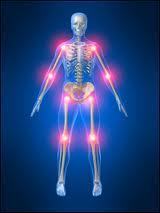

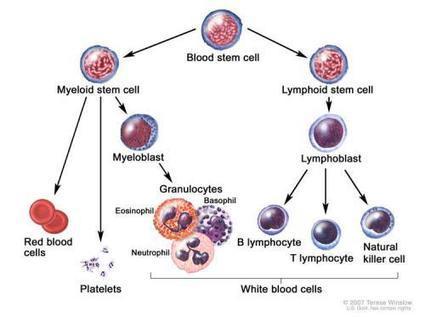
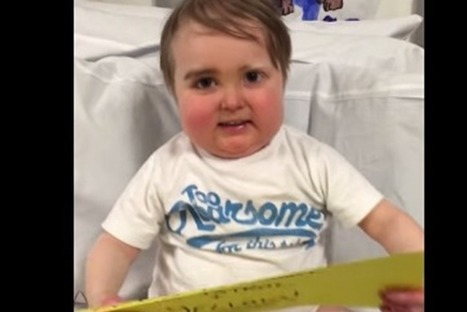

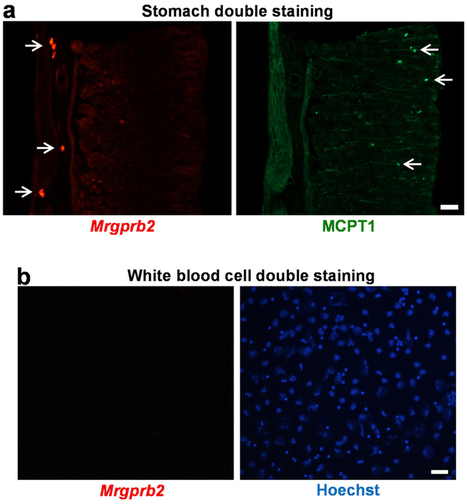
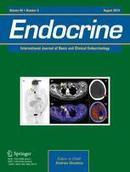


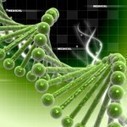
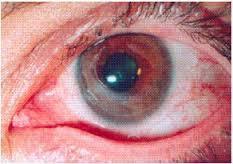
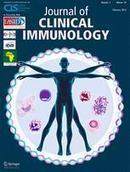
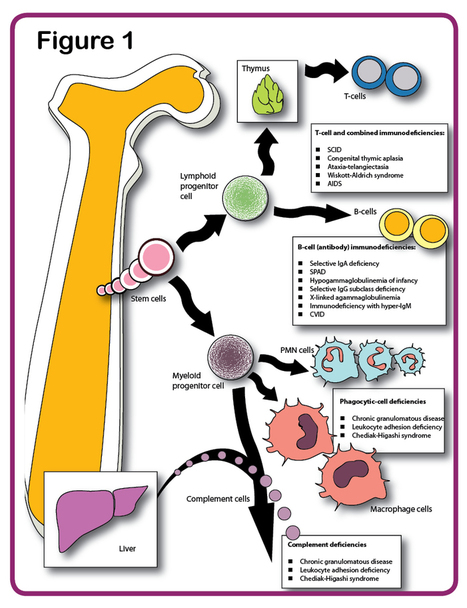
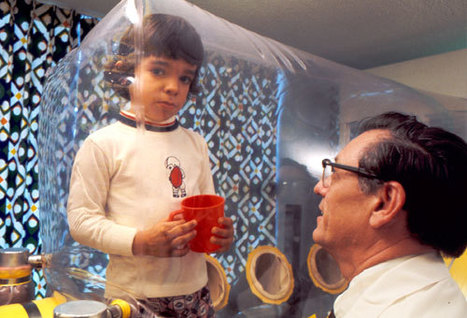


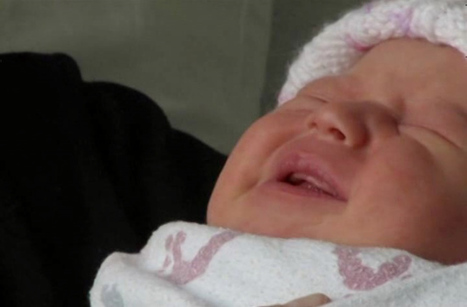
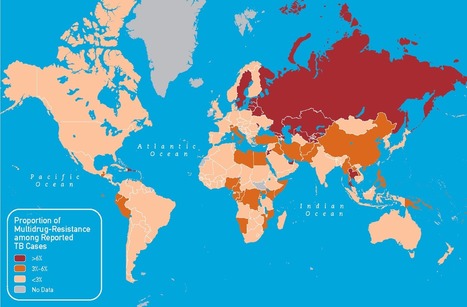
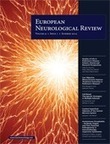

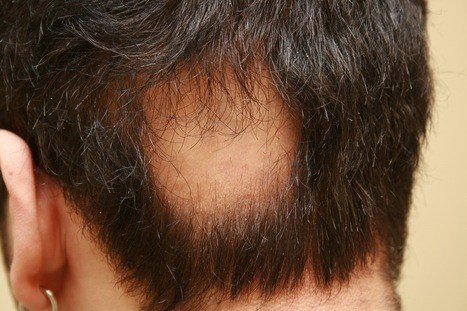
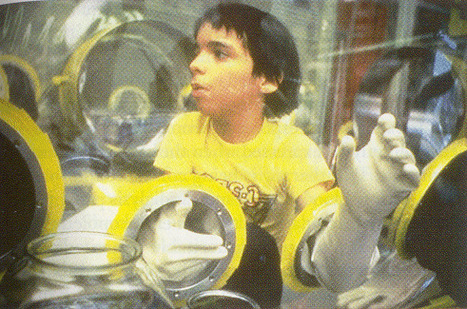

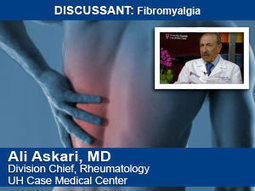
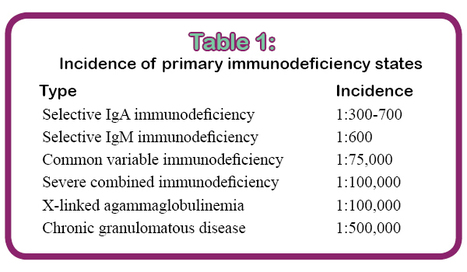
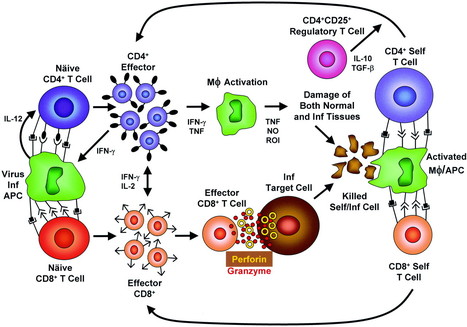





La finalidad es el reciclaje y actualización de profesionales de la inmunología clínica en el campo de Autoinmunidad.
PROFESORADO:
• Alfredo Corell Almuzara (Inmunólogo, Profesor Titular de Inmunología Univ. Valladolid).
• Luis Fernández (Inmunólogo, HU San Pedro de Alcántara).